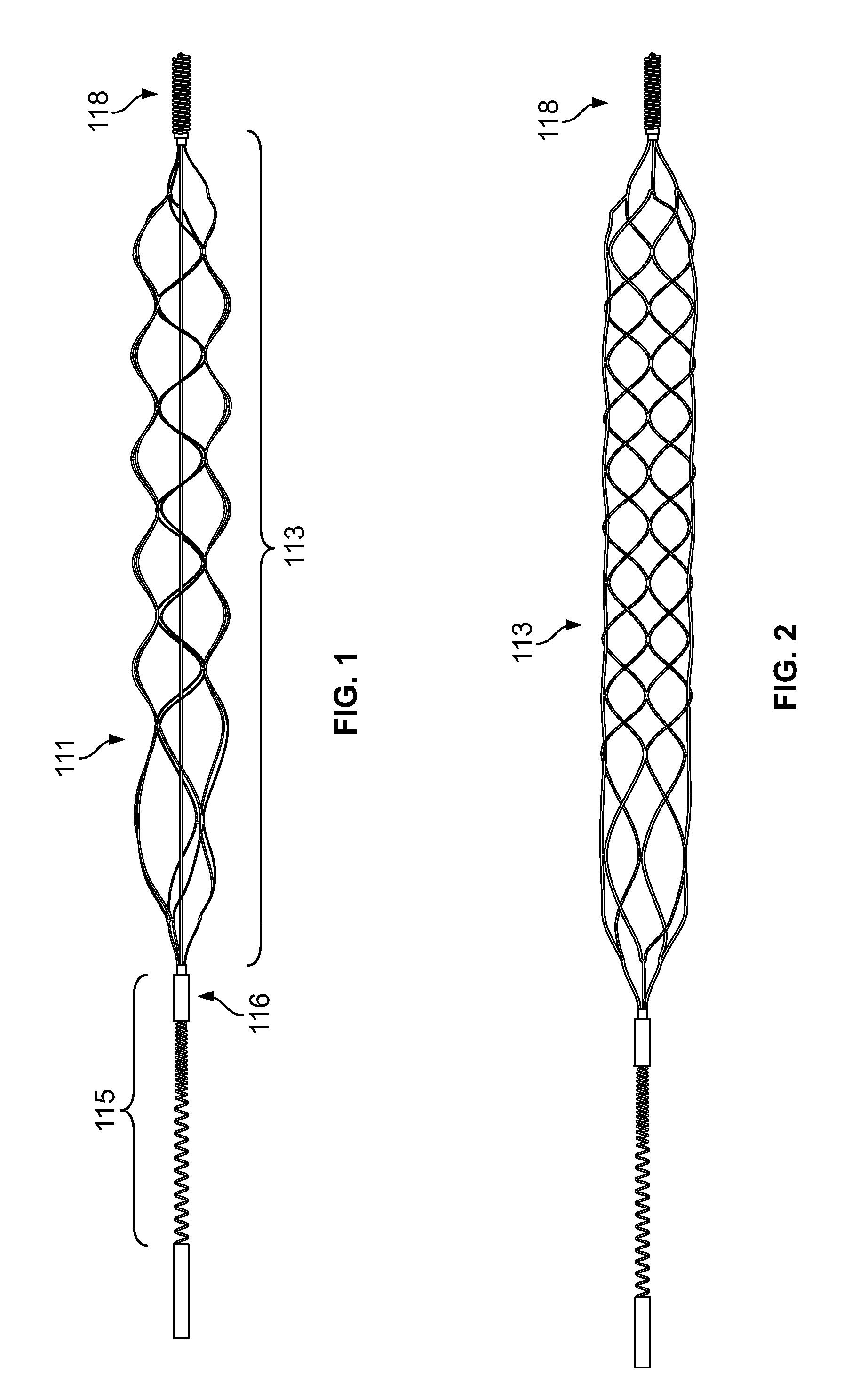Design and methods for a device with blood flow restriction feature for embolus removal in human vasculature
a technology of embolism and restriction feature, which is applied in the field of medical devices, can solve the problems of reducing the possibility of the two parts unintentionally detaching from each other, and achieve the effects of reducing the amount of delivery force, reducing the possibility of joint or joint bonding, and improving the strength of the system
- Summary
- Abstract
- Description
- Claims
- Application Information
AI Technical Summary
Benefits of technology
Problems solved by technology
Method used
Image
Examples
Embodiment Construction
[0036]The present inventor has discovered myriad benefits associated with having blood flow restriction features incorporated within uniquitous systems, devices and apparatus.
[0037]Briefly stated, a mechanical thrombectomy device system is disclosed that is made from a single piece of biocompatible material, including a proximal flow block portion / feature, and / or, a flow block feature in the device body portion, a guidewire like delivery portion and an expandable, treatment portion. The construction of the device from a single piece allows for a seamless transition from the delivery portion to the treatment portion, thus removing any joints or bonding of the two portions together as separate pieces. This improves the strength of the system as a whole and greatly reduces the possibility of the two parts unintentionally detaching from each other. Also, because the distal treatment portion is cut from a piece of material the same size as the proximal delivery portion, it allows the dev...
PUM
 Login to View More
Login to View More Abstract
Description
Claims
Application Information
 Login to View More
Login to View More - R&D
- Intellectual Property
- Life Sciences
- Materials
- Tech Scout
- Unparalleled Data Quality
- Higher Quality Content
- 60% Fewer Hallucinations
Browse by: Latest US Patents, China's latest patents, Technical Efficacy Thesaurus, Application Domain, Technology Topic, Popular Technical Reports.
© 2025 PatSnap. All rights reserved.Legal|Privacy policy|Modern Slavery Act Transparency Statement|Sitemap|About US| Contact US: help@patsnap.com



